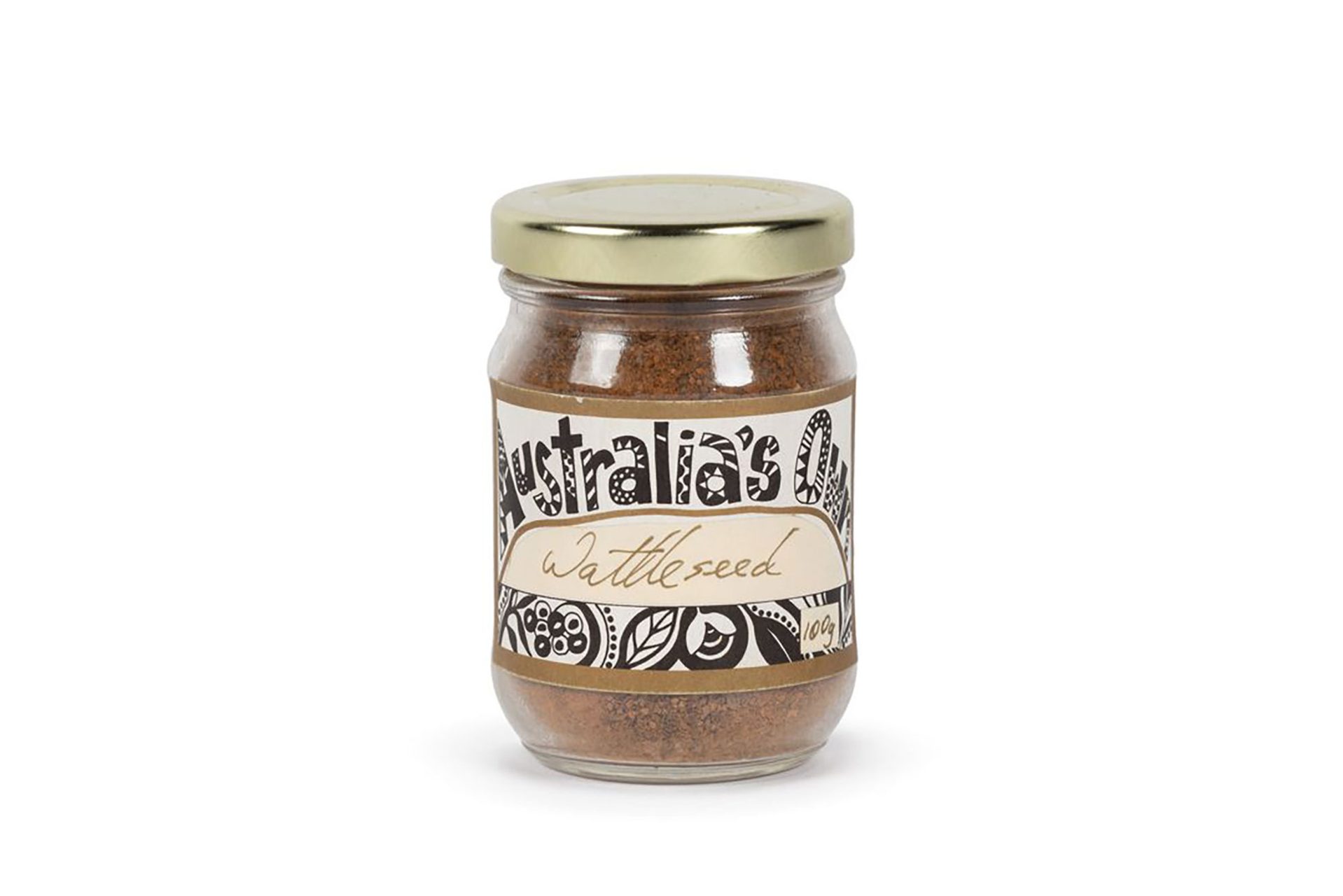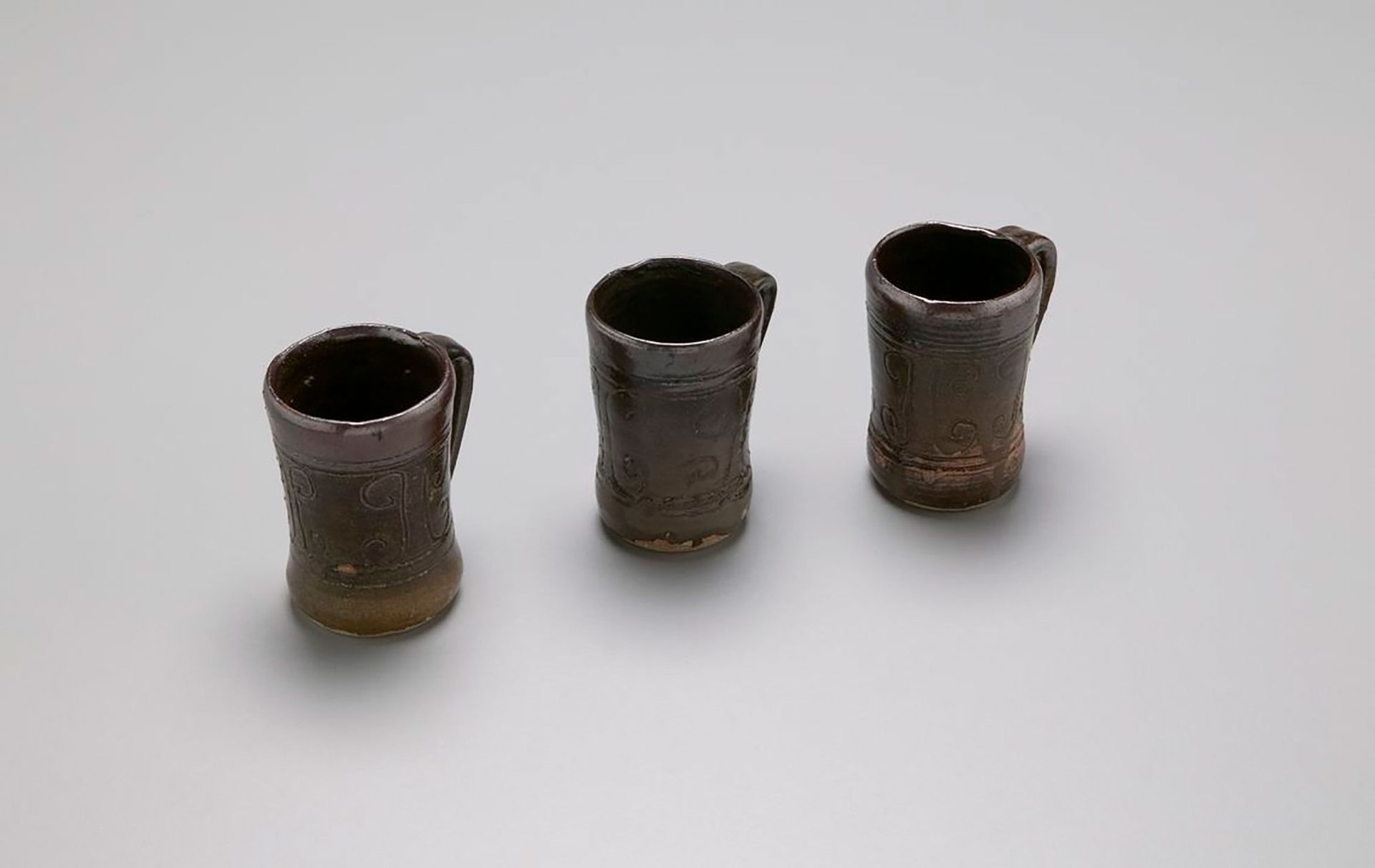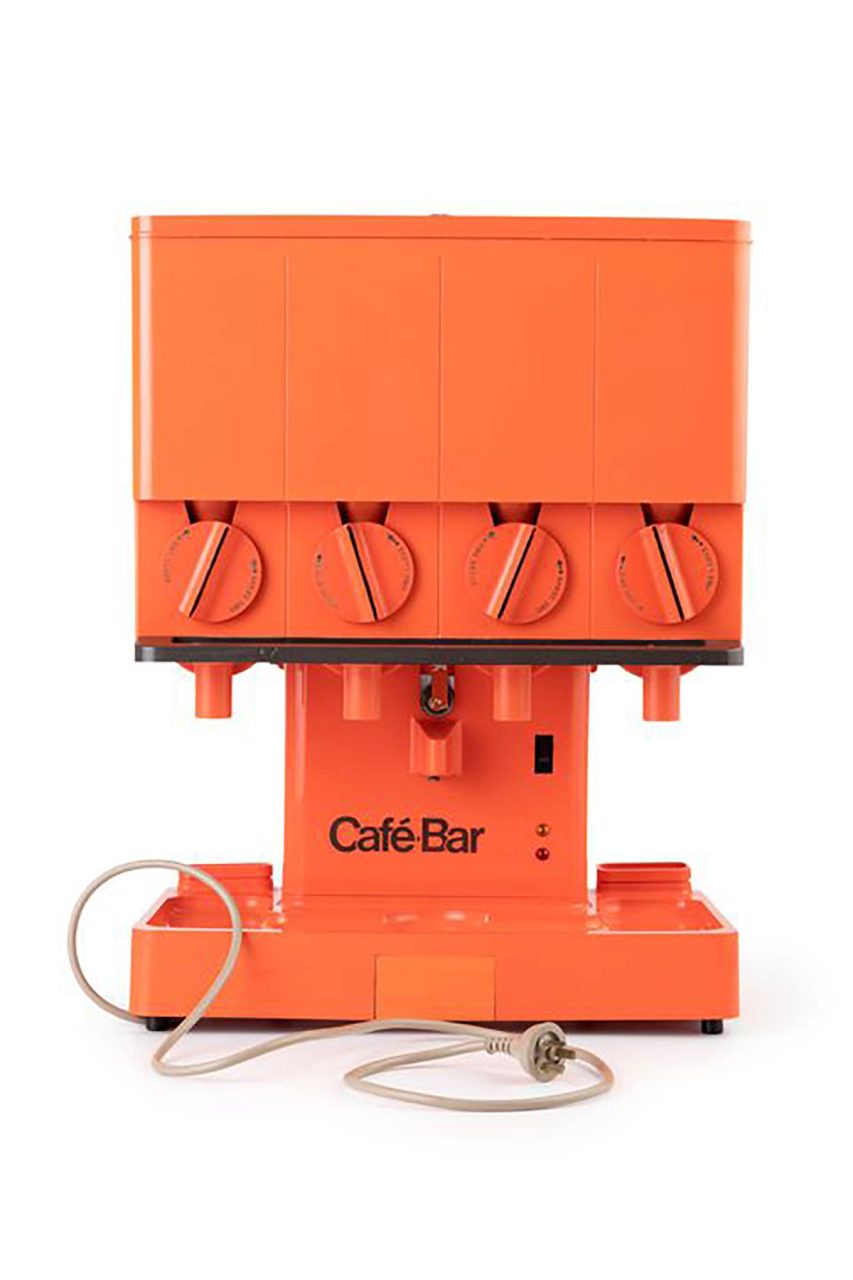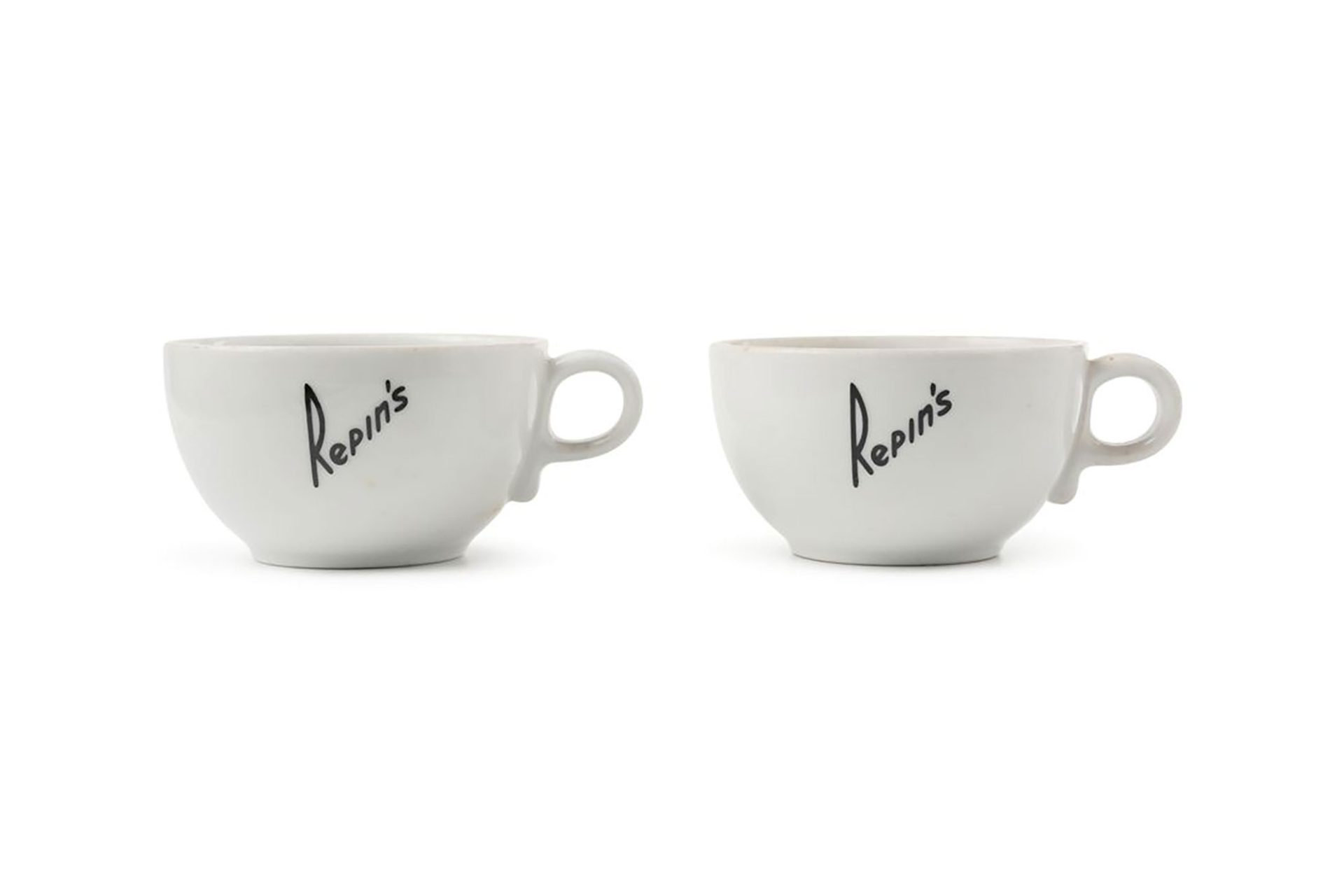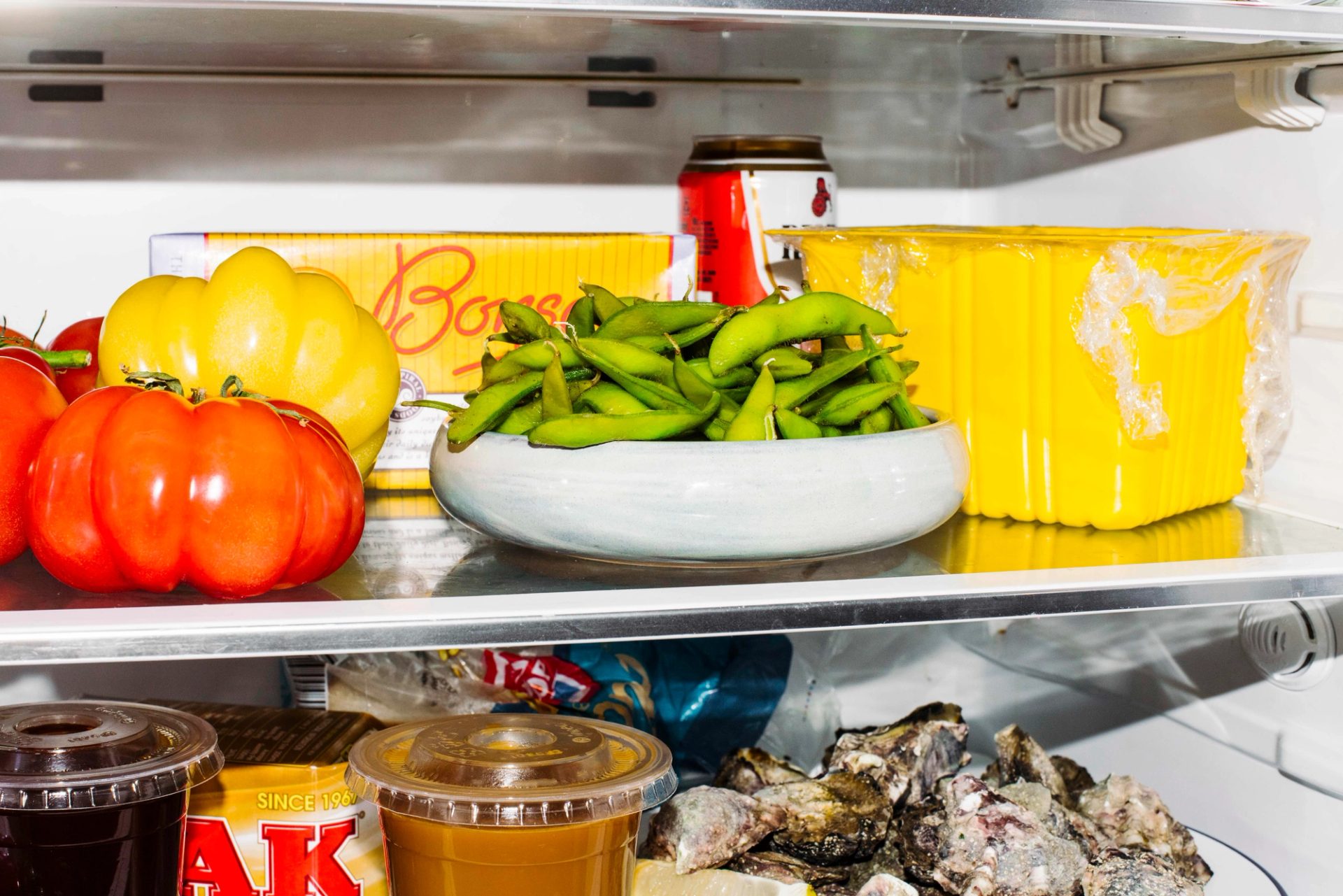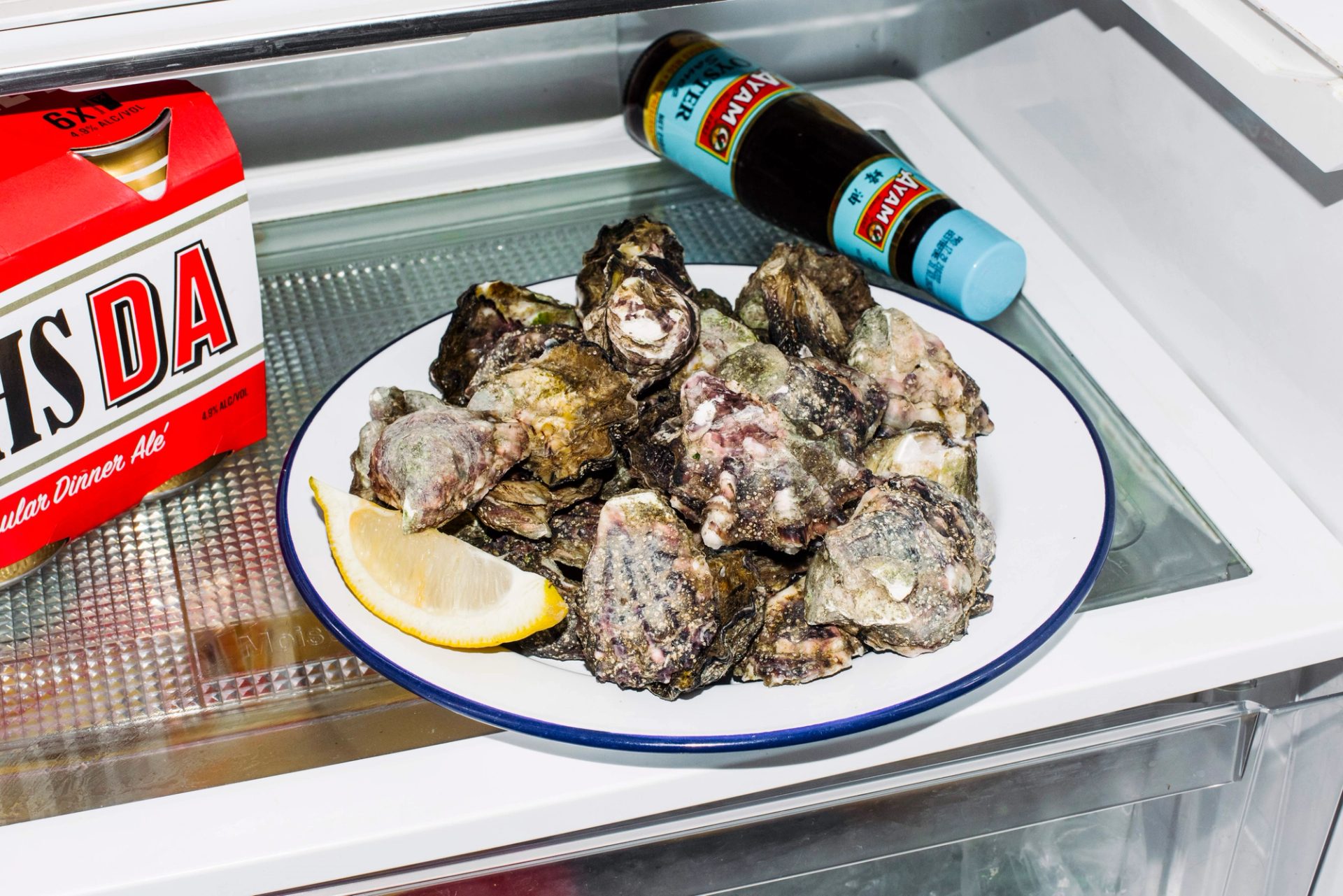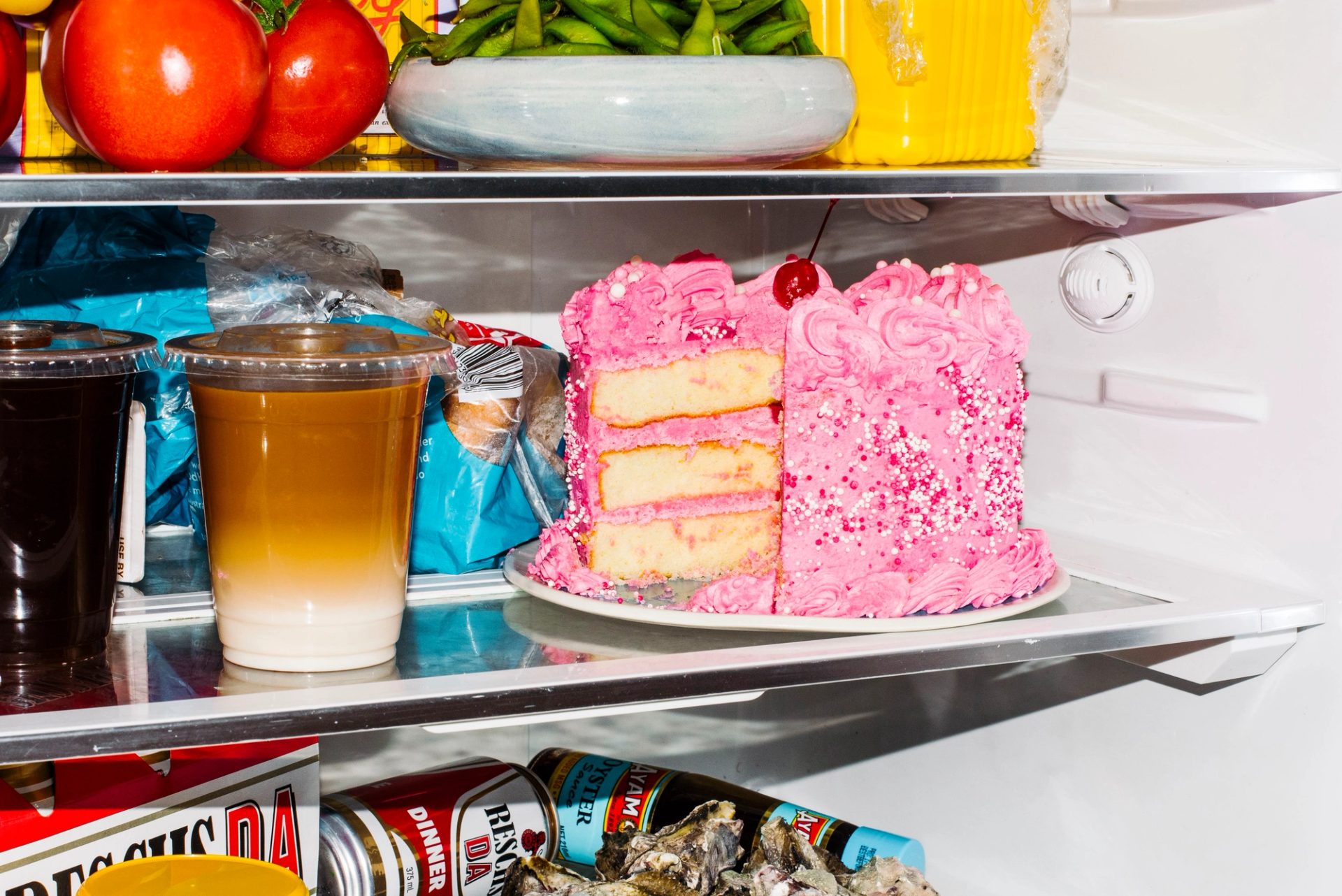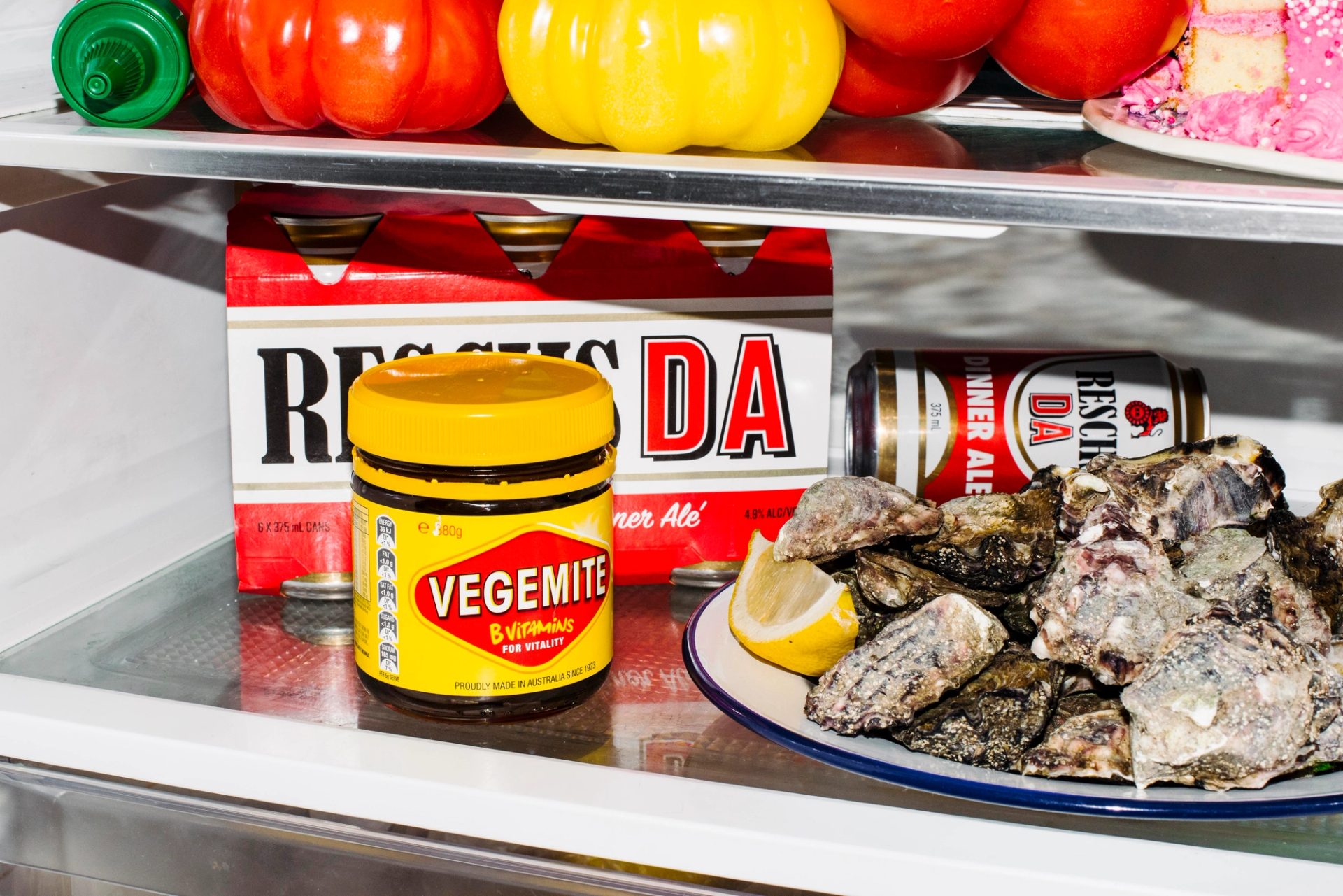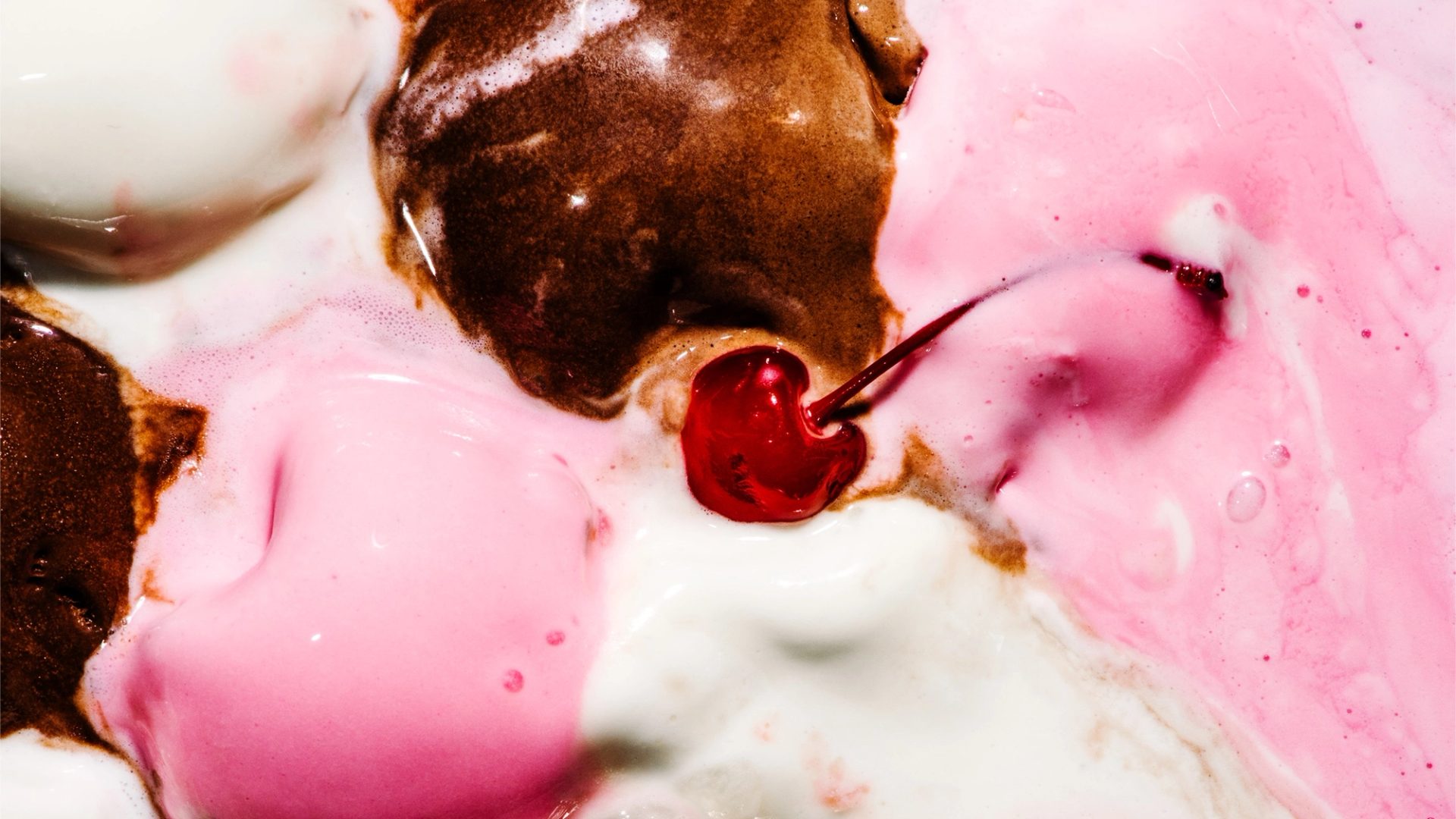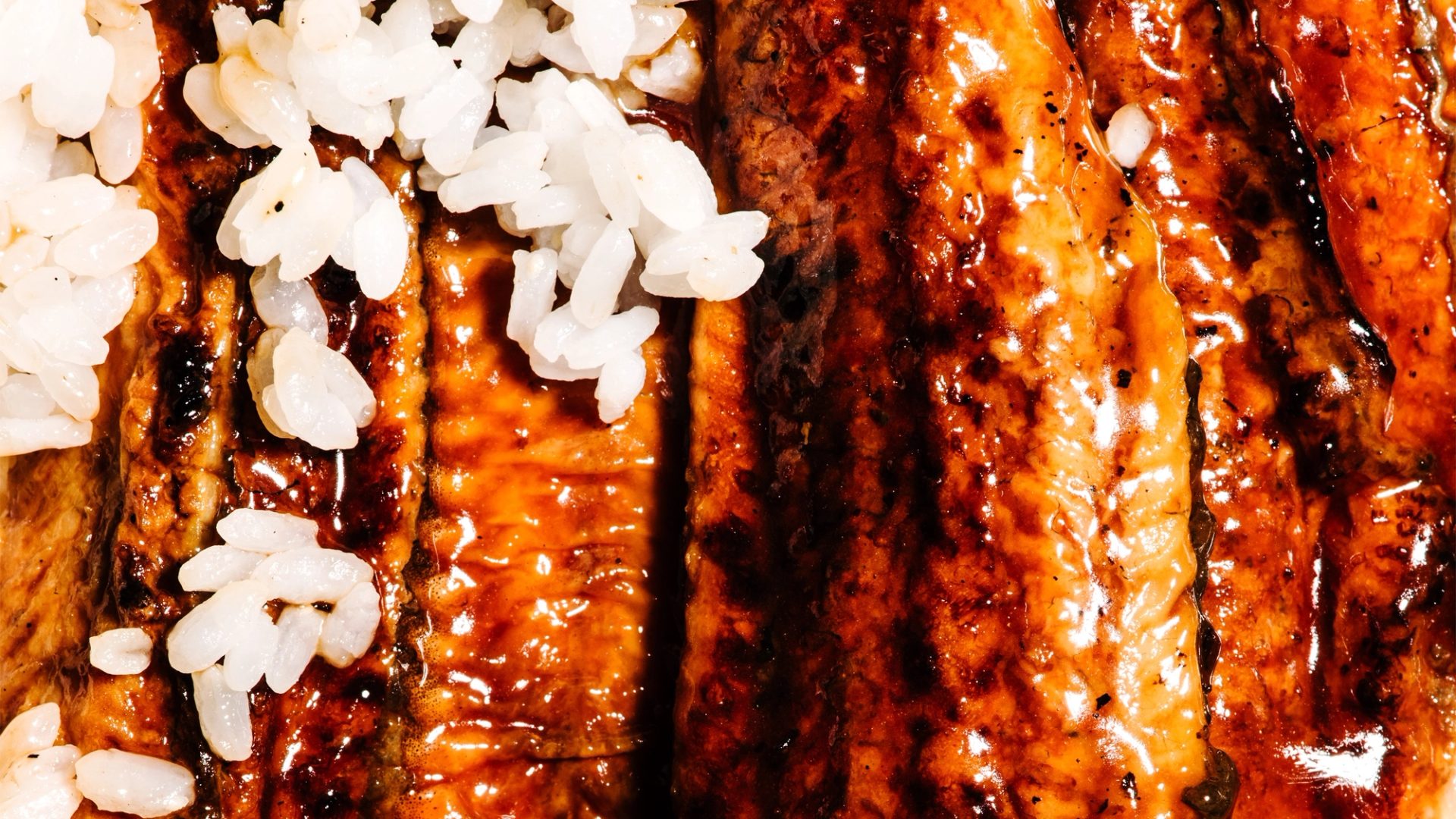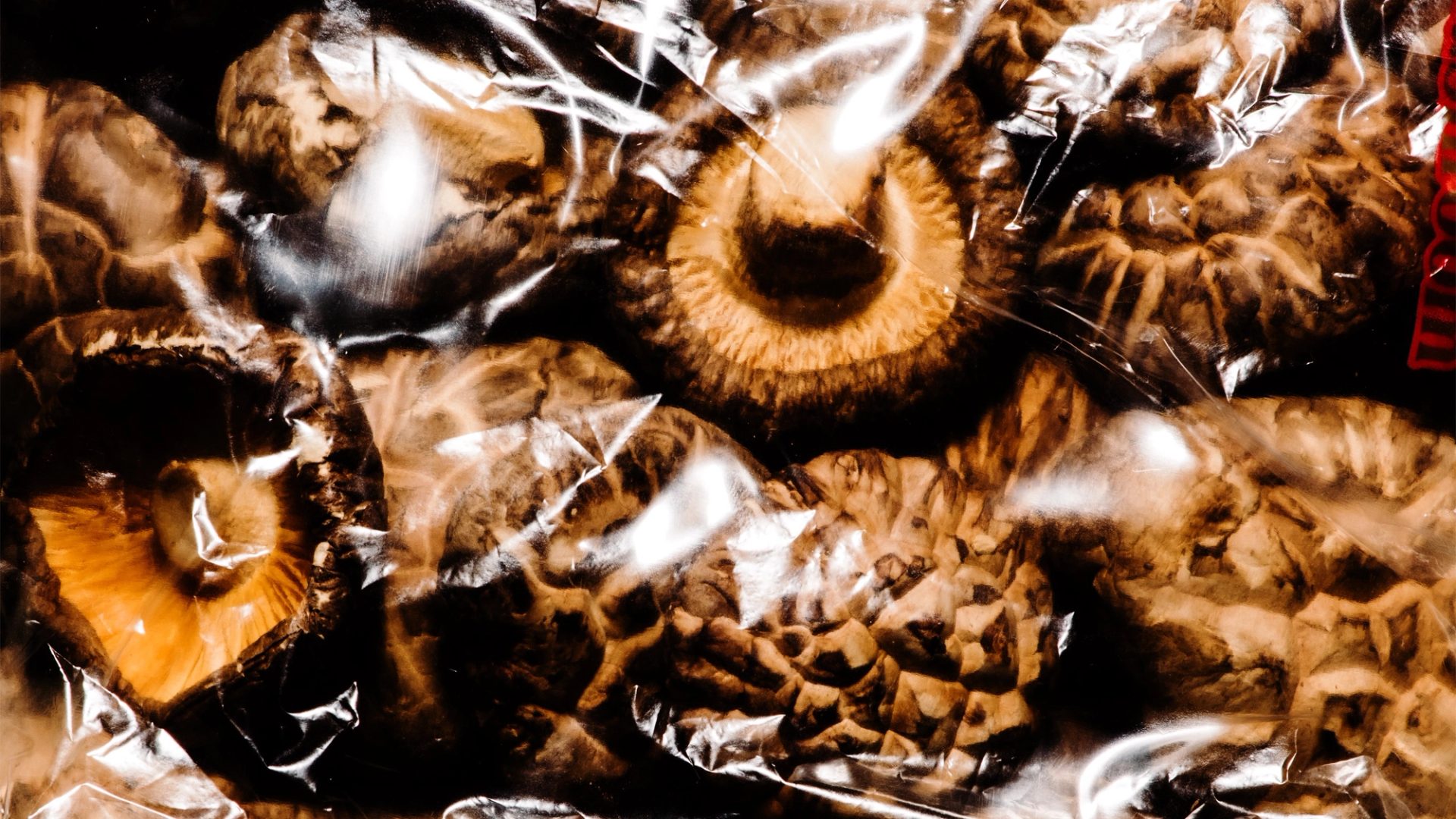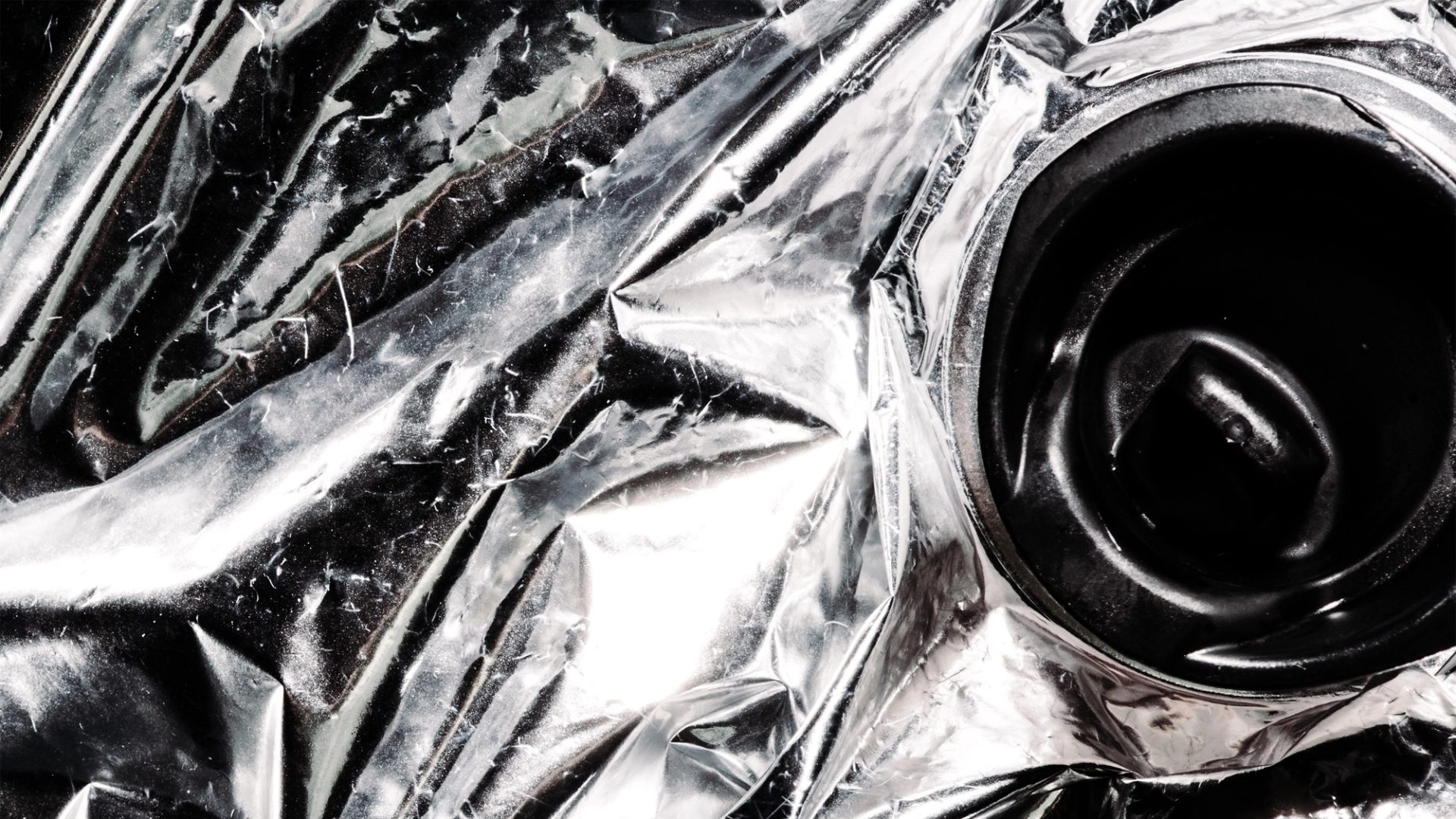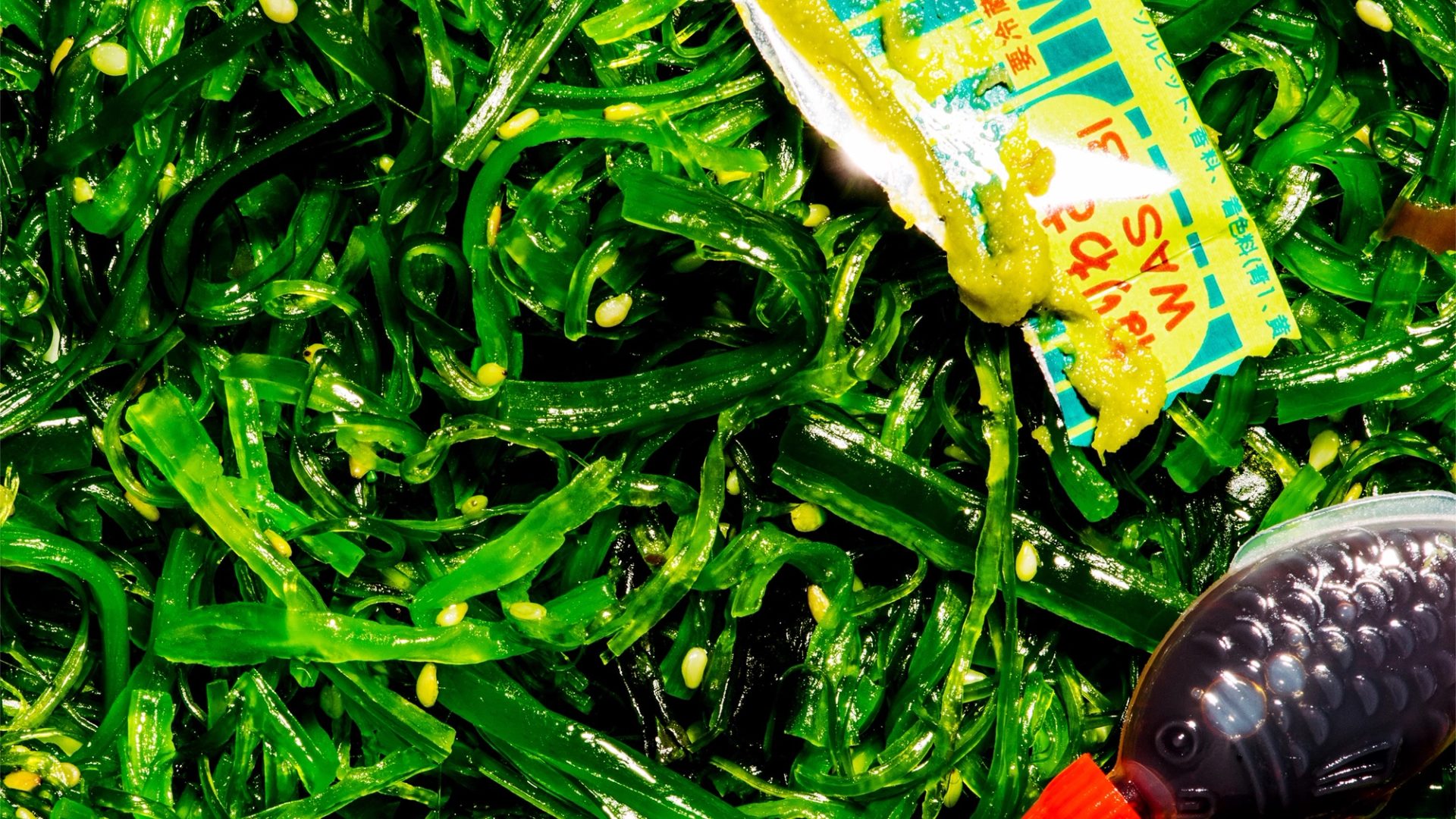Coffee

Culinary Archive Podcast
A series from the Powerhouse with food journalist Lee Tran Lam exploring Australia’s foodways: from First Nations food knowledge to new interpretations of museum collection objects, scientific innovation, migration, and the diversity of Australian food.
Coffee
Australia is famous for its coffee culture. Our espresso obsession kicked off during the temperance movement and the subsequential coffee palaces, and then the influential Depression-era coffee shops run by Russian migrant Ivan Repin. The impact of Italian-Australian migration can’t be denied though: it's paved the way for an inclusive coffee culture that includes Ethiopian coffee ceremonies and Indigenous business owners presenting native ingredients and reconciliation in a cup.
‘There were no seat belts or anything like that. So, we’d just bounce around in the back of these Kombi vans with the odd escaped coffee beans flying around with us.’
Transcript
Lee Tran Lam The Powerhouse acknowledges the Traditional Custodians of the ancestral homelands upon which our museums are situated. We pay respects to Elders past and present and recognise their continuous connection to Country. This episode was recorded on Gadigal, Dharug, Wurundjeri and Bundjalung Country.
My name is Lee Tran Lam, and you're listening to the Culinary Archive Podcast, a series from the Powerhouse. The Powerhouse has over half a million objects in its collection; from an Anglo-Indian coffee pot from around the late 1700s; to photos of mid-century cafes, designed by Hungarian migrants; to the ‘Cafe Bar Compact’ hot drink dispensing machine from the 1970s, the collection charts our evolving connection to food.
The museum's culinary archive is the first nationwide project to collect the vital histories of people in the food industry, such as chefs, producers, writers, and restaurant owners, who've helped shape Australia's taste and appetites. Today we're talking about Coffee.
Nick Repin There were no seat belts or anything like that. So, we just bounced around in the back of these Kombi vans and with the odd escaped coffee beans flying around with us.
Paul van Reyk And then what happens is in 1950 instant coffee hits the market. It's palatable. It's not too strong. It's easy to prepare. The tea break becomes a coffee break.
Tinsae Elsdon Ethiopia is the birthplace of coffee and coffee is a big part of our everyday life.
Shawn Andrews DHUWA Coffee. If you really want to break down the language, it really means to have a good morning.
LTL Australia is famous for its coffee culture, but it didn't begin with Italian postwar migration or even with good coffee. We used some pretty surprising substitutions for beans early on. Things started to change with the rise of coffee palaces during the 19th century temperance movement and the pioneering work of Ivan Repin during the Great Depression. He offered fresh roasted beans at his popular Sydney coffee shops at a time when stale, day old coffee was a given. It's one of many multicultural influences that have paved the way for an inclusive Australian coffee scene that features Ethiopian coffee ceremonies and Indigenous business owners, presenting native ingredients and reconciliation in a cup.
TE I'm Tinsae Elsdon. I'm an Ethiopian and Australian living in the Blue Mountains, roasting Ethiopian beans at Djebena Coffees. I'm sharing Ethiopian culture through food and coffee. Ethiopia is the birthplace of coffee. Coffee is a big part of Ethiopian culture in our everyday life. Usually, the young woman does the coffee ceremony. She wears [a] lovely Ethiopian traditional dress. It's cotton, very nice, colourful. And then we put a little, small coffee table to hold the cups, basically like [a] tea ceremony. That's why I think the idea came to me to start Djebena Coffees. Coming to Sydney back in 2008, seeing [that] Sydney coffee is so popular and people love coffee and straight away I'm thinking [about] my childhood like growing up, we make coffee differently and Ethiopia is a birthplace of coffee. It's not just [that] you go to the coffee [shop] and grab your cup. Actually, we see the process and that encouraged me to brew coffee in that beautiful pot. We call it djebena and that's handmade from clay. So, I thought that's [the] perfect name. And I'm promoting the origin of coffee, how we brew it.
LTL So, what exactly is a djebena and what does it look like?
TE It's beautiful. When you look at its long neck, like balloon bottom, we don't have the filter like any plunger or anything. We just mix it together. And then when we set it, we set it in angle. So, all the coffee goes down. When we pour it, it will filter itself. And usually in Ethiopian everyday life, we have coffee in three rounds. So, the first one is stronger. We call it abol. And the second one, we call it tona, [it’s a] little bit lighter. And then again, we pour another one and then that one will be the third one will be baraka. Like basically finish it with the blessing. Baraka means be blessed. It's brew[ed] slowly in that clay pot. It's not bitter. It's full of flavour. And everyone is surprised.
LTL If you skip to a thousand years or so after coffee was discovered in Ethiopia and you point your compass to 10,000 kilometres away, you'll get the story of how coffee ended up in Australia. Here to tell it is Paul van Reyk, author of True to the Land: A History of Food in Australia.
PvR Coffee came into Australia first in two ways, both to do with the First Fleet. So, officers in the First Fleet in the marines brought their own private suppliers of tea and coffee. Coffee had become quite popular in Britain at the time, but they also then picked up seeds of coffee and some sport coffee plants from Rio de Janeiro, as they were travelling out here, and the trees were planted at Government House in pretty poor soil. So, they did not survive.
Once the coffee that people had brought was used up, people in desperation started to roast wheat and used that as coffee, which must have tasted pretty repulsive. But if you're a coffee addict, what do you do? Tea was always, in the early years of the colony and well into the 1950s, the drink of choice before coffee began to challenge it.
‘And then what happens is in 1950 instant coffee hits the market. Again, it's palatable. It's not too strong. It's easy to prepare. The tea break becomes a coffee break.’
LTL Pretty much every workplace today is powered by the buzz of caffeine. If alcohol is about feeling loose in the moment or feeling rough the next day, coffee’s long been linked with keeping your brain sharp. When coffee emerged in Yemen over half a millennia ago, Sufi mystics used the drink to focus. Coffee houses then proliferated through the Islamic world and German historian Wolfgang Schivelbusch reckoned that the drink appeared ‘Tailor made for a culture that forbade alcohol consumption and gave birth to modern mathematics.’ In England, coffee houses became known as Penny Universities, where you could exchange ideas about politics, science, philosophy over a hot brew. Leaders in England and Sweden tried to ban coffee because they believed such free thinking could threaten their power. The ultimate example of coffee being used to power productivity is its starring role in the world's first webcam.
Archival news report The computer laboratory at Cambridge University, where the scientists loved their coffee. It was so popular that they focused a camera on the percolator so that everyone in the building knew when a fresh brew was on. A year later, they gave it its own internet site unaware that more than 2 million people would share their addiction.
LTL In 1993, University of Cambridge scientists created a live stream so they could keep tabs on a coffee pot shared by different researchers on different floors. Keeping an eye on the webcam could save them an unnecessary walk if the pot was empty, or worse, if it needed to be cleaned. Millions of people worldwide tuned in and viewers from Japan even requested the researchers leave a light on in the computer lab so they could watch the coffee pot in their time zone.
PvR Factory owners were also anti working-class men drinking because they would turn up, supposedly, with hangovers the next morning and productivity would go down. So, the temperance movements try to promote coffee. One of the ways to do this is to adapt what were called coffee houses, which had begun in England. The intellectual class would go to drink coffee and enter into intellectual debates. These are transformed by the temperance mob into coffee rooms, where they can encourage working-class young people to not go to the pub, not drink, but sit and read good material. And by the way, sign a temperance pledge.
Leonard Janiszewski If you wanted coffee, they would generally provide you with chicory instead of actual coffee. And if you wanted it, you could get it. But by and large, it wasn't a particular interest of British Australians. And of course, they were stereotyped as teetotalers. And the myth is that it was the Italians who developed commercially the espresso machine in terms of the public usage of it. Indeed, we would argue that no, that isn't essentially the case here in Sydney. You had a Greek milk bar and cafe proprietor.
LTL You can't discount the influence of Italian migration on Australia's coffee scene though.
PvR A couple of things then happen after World War I; Italian migrants have been coming and you get Rinald Massoni installing the first espresso machine in 1929 at Café Florentino, which continues today in Melbourne. So again, you're getting now a different style of coffee coming up; the espresso coffee; Greek coffee, thick; English coffee, weak; espresso coffee coming stronger.
At the same time, you've got this Russian immigrant, Ivan Repin, who comes to Australia and in 1930 in Sydney opens the Coffee Inn in King Street. What's different now about what Repin is doing, he has begun now grinding the beans fresh. You're walking past a building; you're smelling coffee being ground and roasted. It's sort of the two steps of the roaster to the barista, making your coffee for you on demand. This is again, a different level of sophistication. What's attractive about this of course is particularly for the migrants post World War I from Europe.
LTL Let's hear from someone from the Repin family.
NR My name's Nick Repin, I'm the third generation of the Repins in Australia, since they immigrated in the '20s. And I'm at the Northern Rivers on what was a coffee farm. Once upon a time, we used to grow coffee here. My father was George, who was the son of Ivan Repin who was one of the co-founders of Repin’s Coffee in the '30s.
They came out from Russia after the revolution in the 1920s via Manchuria and took the first boat basically out of Shanghai and then started Repin’s when they realised that there was no affordable coffee shops or lunch places in the city at the time for the workers. One of their first shops was in Castlereagh Street, and they used to roast their coffee in the windows. And they did that for many years until the neighbours complained basically about the smell.
That chain of coffee shops expanded throughout the city, and they moved the importing and roasting business to Rosebery. Repin’s Coffee kept going to the mid ‘60s when parts of it sold off and shut down.
LTL Repin’s made an impact because it offered fresh roasted coffee at a time stale, day old brews were the norm. Over time, its coffee shops also stood out because they were very inclusive venues.
NR It was very tolerant. And so, it was probably one of the gay meeting places in Sydney at the time, cause there weren't other places that offered that sort of opportunity or were tolerant. It was welcoming to the artists and the Bohemians at the time. So, the Sydney Push used to meet frequently in Repin’s. Inclusivity was very much part of it, probably because of the origins of the people who founded it and worked there originally. Obviously founded by refugee Russians, subsequently they became the employers for a large part of the Russian community and the Baltic Communities. So, there were many displaced people who ran and worked in the shops. So, Estonians, Austrians, Lithuanians, Latvians, Russians, Ukrainians, all that. It was a mixing pot. I've met a lot of people professionally, and when they see the name say, ‘Ah, are you related to Repin's Coffee?’, and usually that then follows on, ‘Yes, I did my courting there,’ or ‘I proposed to my wife there.’ It was that sort of meeting place. I think my father died last year and he was 93. He was still in touch with old employees or their descendants.
LTL In fact, an old Repin’s employee, Dorothy Henry donated spoons and other Repin's memorabilia to the Powerhouse collection. She worked at the Repin’s Coffee Inn on Market Street in the Sydney CBD from 1937 until its doors closed more than three decades later in 1970. Diving through the Powerhouse collection isn't the only way to relive the heyday of Repin’s. For Nick Repin, the smell of coffee can transport him back in time too.
NR We also used to love visiting the factory cause it just smelled wonderful. The roasters going. And of course, there were no seat belts or anything like that. So, we just bounced around in the back of these Kombi vans with the odd escaped coffee beans flying around with us. Well, we were sitting on stacks of coffee probably from time to time bouncing around. Gotta make it maximally dangerous, I think.
LTL To talk about coffee making in Australia, you need to tell the stories behind the families who brought those brews to us. They're often migrant stories, stories of people who kept the family business going. Even if they had other dreams.
NR My father, he trained as a doctor, but his father got very sick and died suddenly in 1949. So, my father then moved into the coffee business to assist my great uncle because pretty well, the whole family depended on that business for their income. So, he was trained as a doctor, but he then moved straight into a completely different field, which was catering and coffee, which he then did for 28 years and took it on full time and was involved a., with learning how to cook and doing chef courses, but also with the politics of better conditions for the workers. It was a hell of a displacement. He was probably 21, I think, when his father died. He did 25 years odd and then went to medicine where he had a whole separate career heavily involved in bringing Medicare in its current form, along with the politicians obviously. He maintained that the catering trade set him up for that because he was used to breaking up the fights between chefs with meat cleavers in the back alleys. So, he thought that really set him up for a career in medical politics.
LTL In 1955 Nick's dad, George opened the Moka Café in Sydney's Kings Cross. It was quite groundbreaking at the time.
NR The Moka was ahead of its time because it had had one of the first espresso machines in Sydney. Probably not the first. That's always been a happy little debate between Cominos, versus the basement of the David Jones, versus Andronicus. But anyway, and certainly it wasn't the first in the country cause Melbourne beat them by a year.
LTL There's debate over who gets credit for starting Australia's coffee culture. Nick Repin’s Russian migrant grandfather, Ivan was clearly a big influence on Sydney's coffee scene, given what he was doing back in the 1930s, but his grandson charitably offers a different perspective.
NR I think it's hard to debate that the Russians were leading, but the Greeks were there as well [laughs]. You know, it was multicultural. There were so many different threads to the story, and I think it was really kind of wrong to try to lay claim to the leadership. I think everybody was just bringing new ideas to the country after the 1920s and a great thing too.
LTL Nick Repin also had his own coffee growing stint.
NR We're up near Newrybar. A lot of coffee's grown around here. I moved up here for other work, but we bought the farm, we thought we might as well follow the family tradition and see how it works. Oh, which we did for a while, 10, 15 years. Financially, it's a difficult trick in this country because the cost is so high to make a go of a coffee business with small acreage. And while it was fun, we had to really just let it go in the end. It was just a small output, which we used to distribute to one of the hotels in Perisher. That was our main output each winter cause they wanted a locally grown coffee.
LTL Speaking about growing coffee, let's hear again from Tinsae Elsdon. Coffee beans have been growing wildly in Ethiopia, where she's from, for millennia.
TE There are a lot of coffee wildly growing in different part of region we celebrate coffee in Ethiopia. So, I remember as a young girl, my aunties, even my mum when she makes coffee, they encourage[d] us to [be] involve[d] like by grinding the coffee or passing the cup for the guest or passing the popcorn. We have coffee three, four times a day; sharing with our neighbour and whoever come[s] to visit us, we pull out our coffee. We don't have to have that big meal, but over popcorn or roasted barley and chickpeas, we share that coffee over conversation; [it] can be about politics or our community issues. And we might talk about our children. I think it's very, very important, more than any other meal, basically.
LTL Let's hear from Sharon Winsor who adds native ingredients to the coffee she sells.
Sharon Winsor Yaama My name's Sharon Winsor. I'm [a] Ngemba Weilwan woman from Northwest New South Wales. I'm the founder and CEO of Indigiearth and Warakirri. There's the lemon myrtle infusion, quite a subtle flavour of the lemon myrtle in it. And it's not too overpowering. And then the wattleseed one, which just enhances the coffee flavour with its nutty rich flavour.
LTL Like the women who play a key part in the coffee ceremonies Tinsae Elsdon grew up with in Ethiopia, women play a role in this coffee ritual in terms of gathering the native ingredients that infuse the brew.
SW Yeah, it has that flow on effect where we’re directly supporting local business and has that further flow on effect of supporting remote and regional Aboriginal communities and women and the young girls who are out harvesting and growing these products.
LTL So, let's talk about how coffee went from something that was used to repel the smell of bad meat to a mainstream drink in this country.
PvR So, coffee gets its real boost in Australia during and immediately after World War II. Post war you get two groups of migrants who are quite significant. Italian migrants, particularly Southern Italian migrants, who are coming to work on the Snowy Hydro Project in the building industry. And then you do of course get the middle European refugees, you know, who have been escaping Hitler.
LTL To find out more about the Australian coffee scene, where it's been and where it's headed, let's hear from one of the oldest coffee roasters in Australia, which has paired up with Indigenous entrepreneurs to run DHUWA Coffee.
SA Gurumba bigi, I'm Shawn Andrews, co-founder at DHUWA. My Indigenous business partner in my businesses is a guy named Adam Williams. He's a Wiradjuri man.
Peter Patisteas I’m Peter Patisteas. I am part of DHUWA team. I look after more the operational side, which is roasting coffee. My uncle and my dad started a business called Oasis Coffee in the seventies. Coffee really wasn't anything on the radar. There was some Middle Eastern coffee that was being done and really pulverised or very fine product. And there was a super Italian side, which was an espresso. So, they started a little business called Oasis Coffee. And they went about doing that change in the Australian hospitality scene, where people used to, you know, laugh at putting an espresso machine on your counter and things like that. Like it was just an absurdity. They were fortunate enough in the mid '80s to acquire what is now Griffiths Bros. And it was a business that has long roots from 1879, roasting coffee, importing green teas. I started working with my dad during the holidays. I took over the business and then I recruited the other bro, which is my brother-in-law, Chris Togias.
[My] Strongest memory as a kid working with my dad was by about 1:30pm, 2:00pm, I used to just run outta steam. You know, dad would start at 6:30am and by 2:00pm I was done, you know, so you're probably eight or nine. So, the beans come in pallets. So, there's 60 kilo bags lined up with one another and they peel up and they used to just stack them. And I would climb up the side of it – so, three pallets high – and hide and go to sleep on those bean bags. And then, you know, my dad would start yelling and I would avoid all correspondence. That's my strongest sense. The other thing that with that is smell the green beans they emit, the hessian bags, the jute bags, the beans themselves, they emit a certain dust and aroma and it's just unforgiving. And I still smell it today. I think of that memory and the smell comes back directly and it's like, wow. So yes, avoiding work was my fondest memory.
SA Indigenous language isn't always so straightforward. The word dhuwa is a word that you use just to represent, ‘Are you having a good morning?’ or ‘I am having a good morning.’ And I walked in here, I already knew about Pete and Chris's business, Griffith Bros, already in the sense of what it is and what it achieved and it being the oldest coffee roaster in the country.
‘I’m unashamedly Aboriginal everywhere I go. [We] can pour a cup of coffee and we sit there and say, “let's have this conversation about reconciliation right now’
SA And it was part of our initial plan for Adam and I back when we thought up DHUWA and all the things that need to curb it, they said, ‘How do we actually force Indigenous culture into everyone's homes?’ And coffee was that vehicle. Have a drink of it, have a conversation about reconciliation. Maybe it'd be families reconciling after not seeing each other during COVID times. You know, doesn't just have to be Indigenous reconciliation. It could be reconciliation in many forms. We need people to have conversations. We’re only just getting started and you know, it's something to celebrate, but it's also something that we should be questioning and probably be a little bit ashamed as Australians that there's not more Indigenous products.
LTL Sharon Winsor also offers an Indigenous inspired coffee. Her brews infused with wattle seed and lemon myrtle are available through her Indigiearth business, as well as her Warakirri Café in Mudgee.
SW It's become quite popular, and people are really enjoying it. So just another way to [be] enjoying native flavours in an everyday product. We serve the coffee at Warakirri and so, you know, putting the lemon myrtle coffee through the coffee machine to make a latte with it.
LTL So, Australians used to only have a few cups of coffee during their lifetime. And now, well, things are really different.
PvR In the census around 2011, 22000 people in Australia said they were baristas as their employment, right? Who'd ever heard of a barista before, like, you know, 1990, whatever. They still debate as to whether Australia invented the flat white or New Zealand did, but I'm rooting for Australia as having invented the flat white and taking it to the rest of the world.
LTL So, before you had baristas asking for your name and whether you wanted a long black, flat white or the single origin of the week, and long before instant coffee was a fixture in office kitchens, people were substituting coffee with roasted wheat or barley, or just using their beans to wave away the smell of rotting meat.
But coffee is key to society in its birthplace, Ethiopia, as Tinsae Elsdon demonstrated through her coffee ceremonies. Through Paul van Reyk, Leonard Janiszewski and Nick Repin, we learned how multicultural the story of coffee is in Australia. Instant coffee came from America with Japanese origins and Greek, Russian and Italian migrants all played a vital role in making coffee a part of everyday Australian life. Coffee is ultimately about bringing communities together. Repin’s was a beacon for gay people, refugees and artists. Penny Universities welcomed radical thinkers and cafés have always been homes to outsiders and creative types. And for Sharon Winsor and Shawn Andrews, coffee also offers a way to bring Indigenous culture and conversations about reconciliation to your everyday brew.
TE In the Ethiopian coffee ceremonies, we don't give just coffee. You don't have to have that big meal, but little snack like roasted barley, chickpeas, popcorn or Ethiopian homemade sour bread. I think like Italian do with the little cookies.
LTL This episode was inspired by items from the Powerhouse collection, such as the coffee cups, spoons and menus used at Repin’s Coffee shops, architectural drawings of the Grand Central Coffee, Palace Sydney, and the tin for Anchor Brand coffee and chicory.










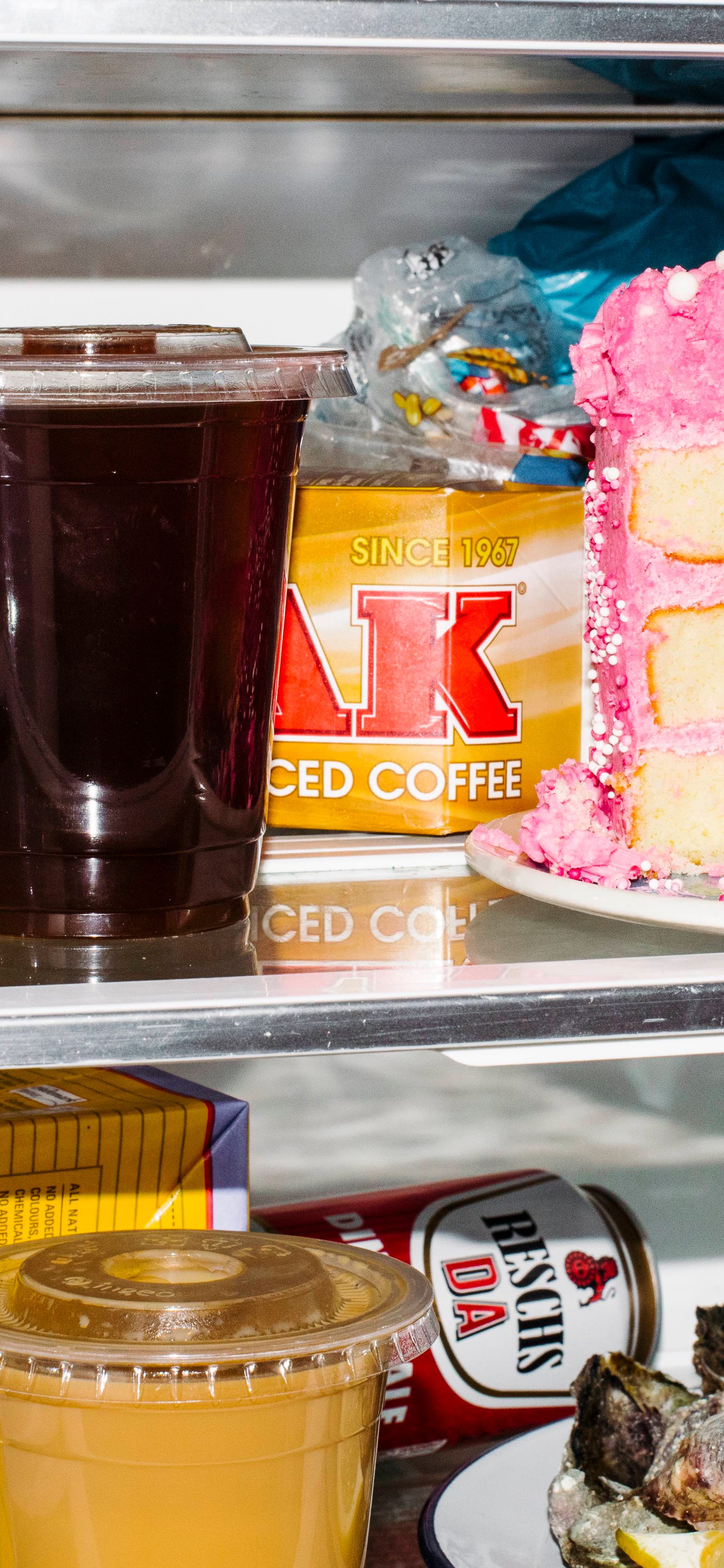






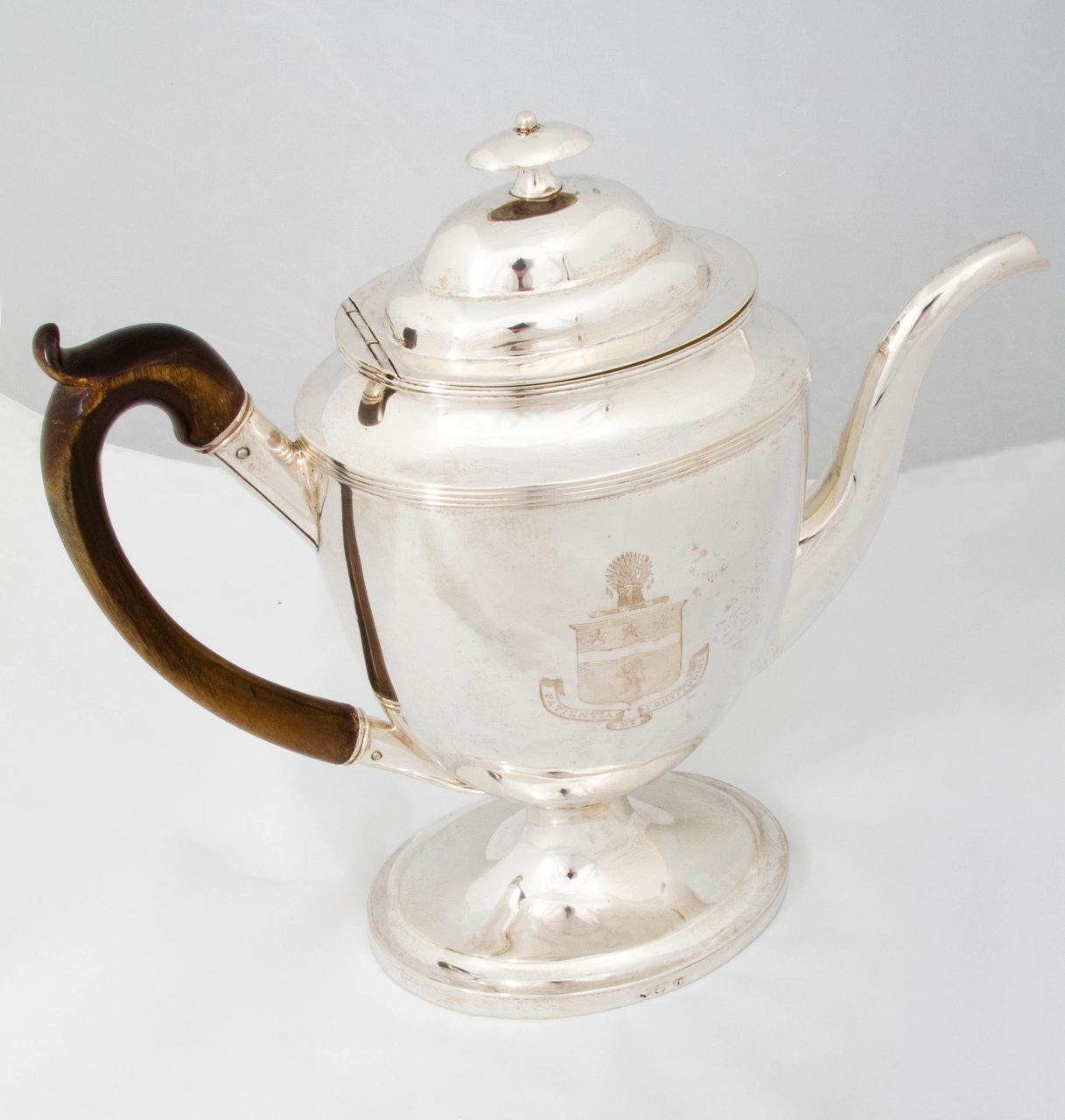
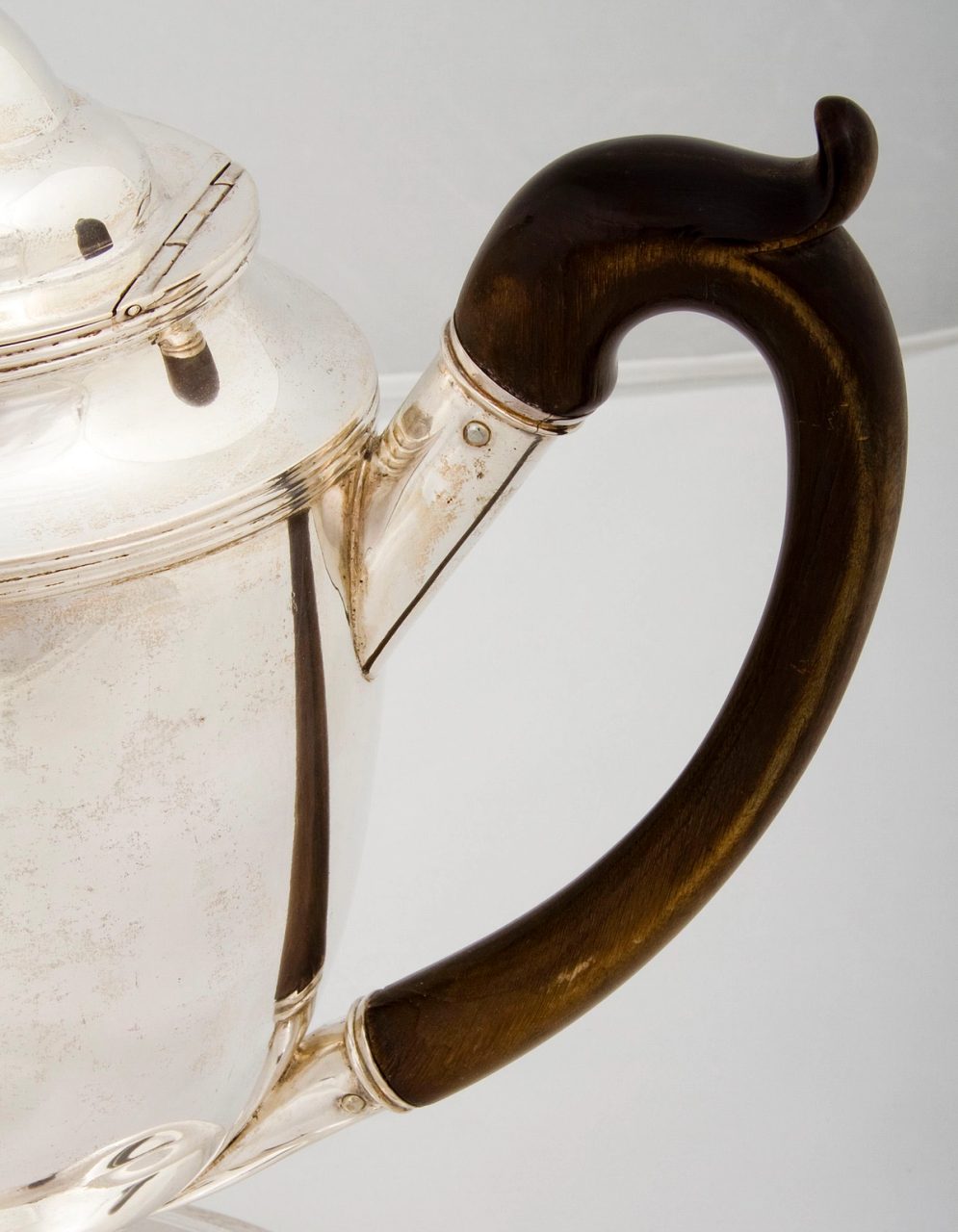

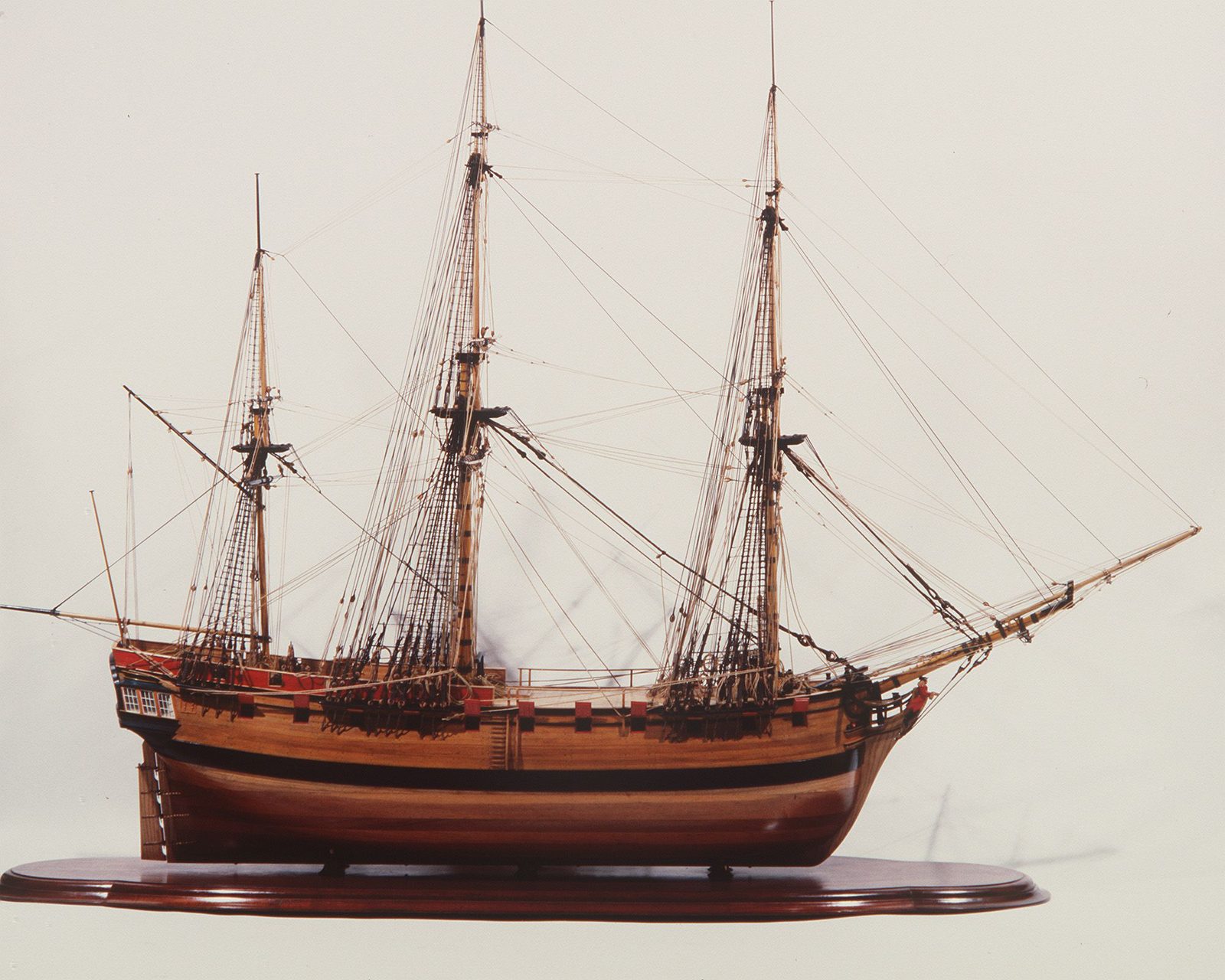
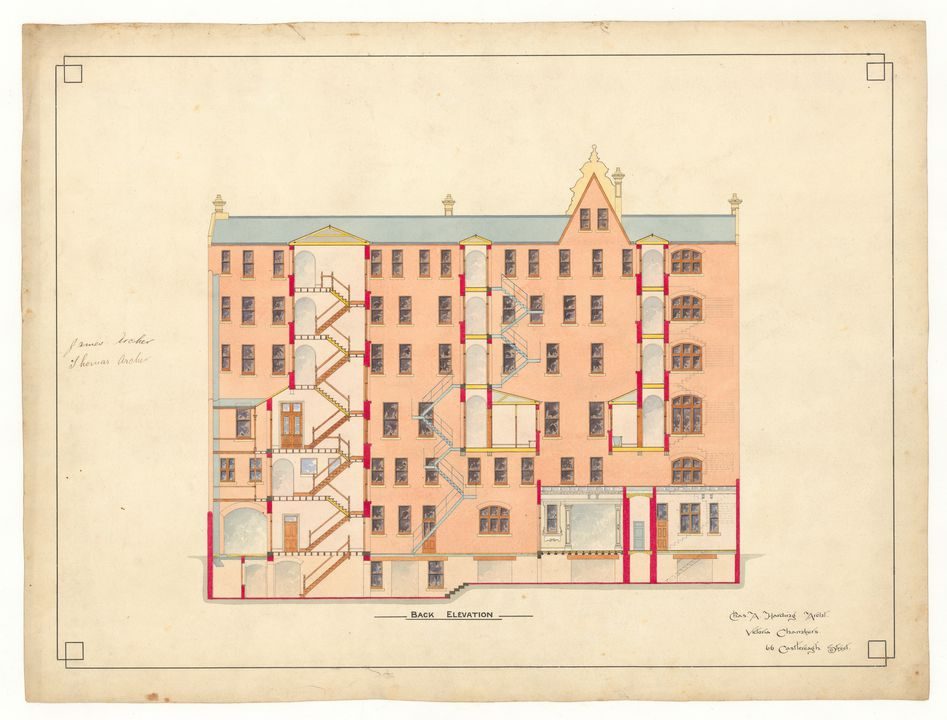
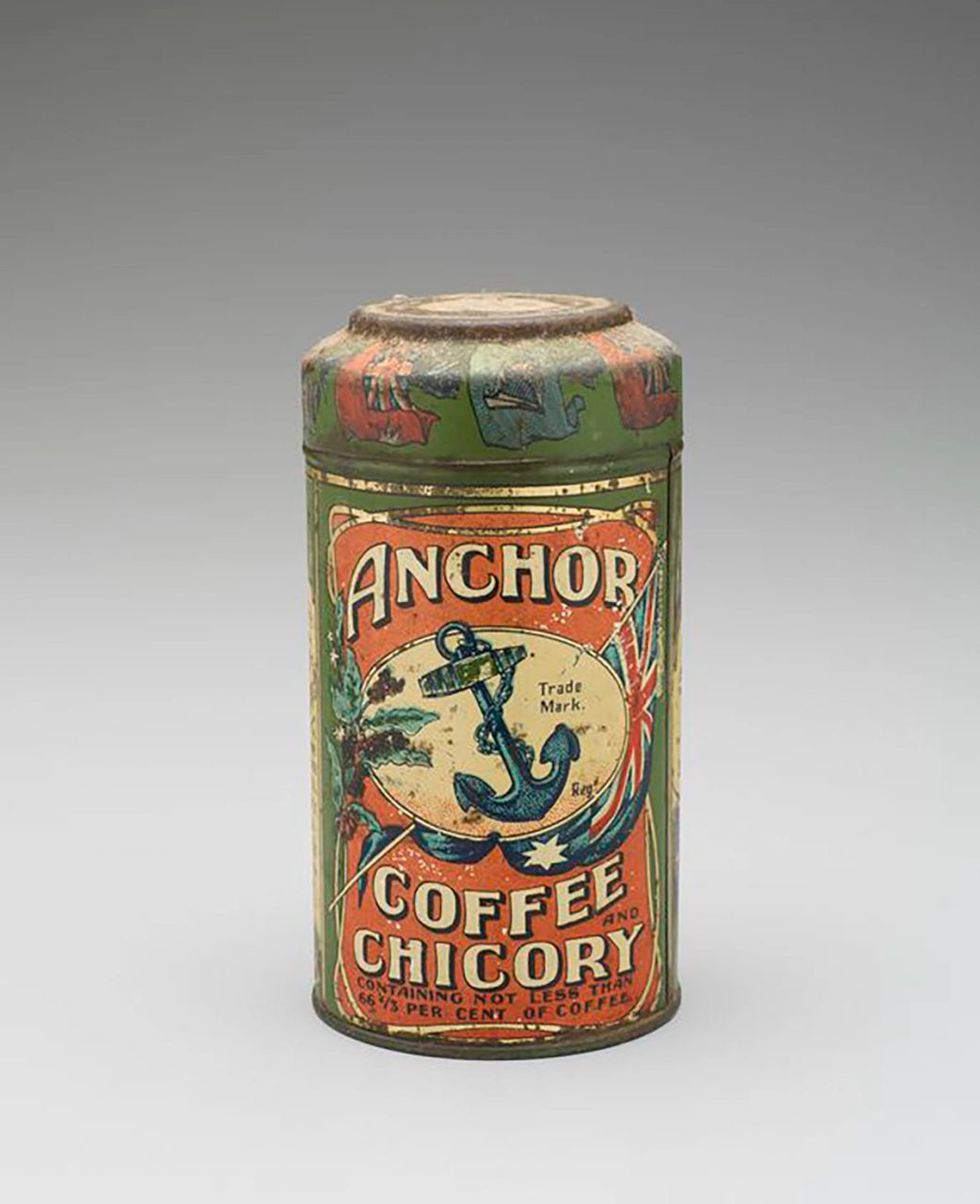
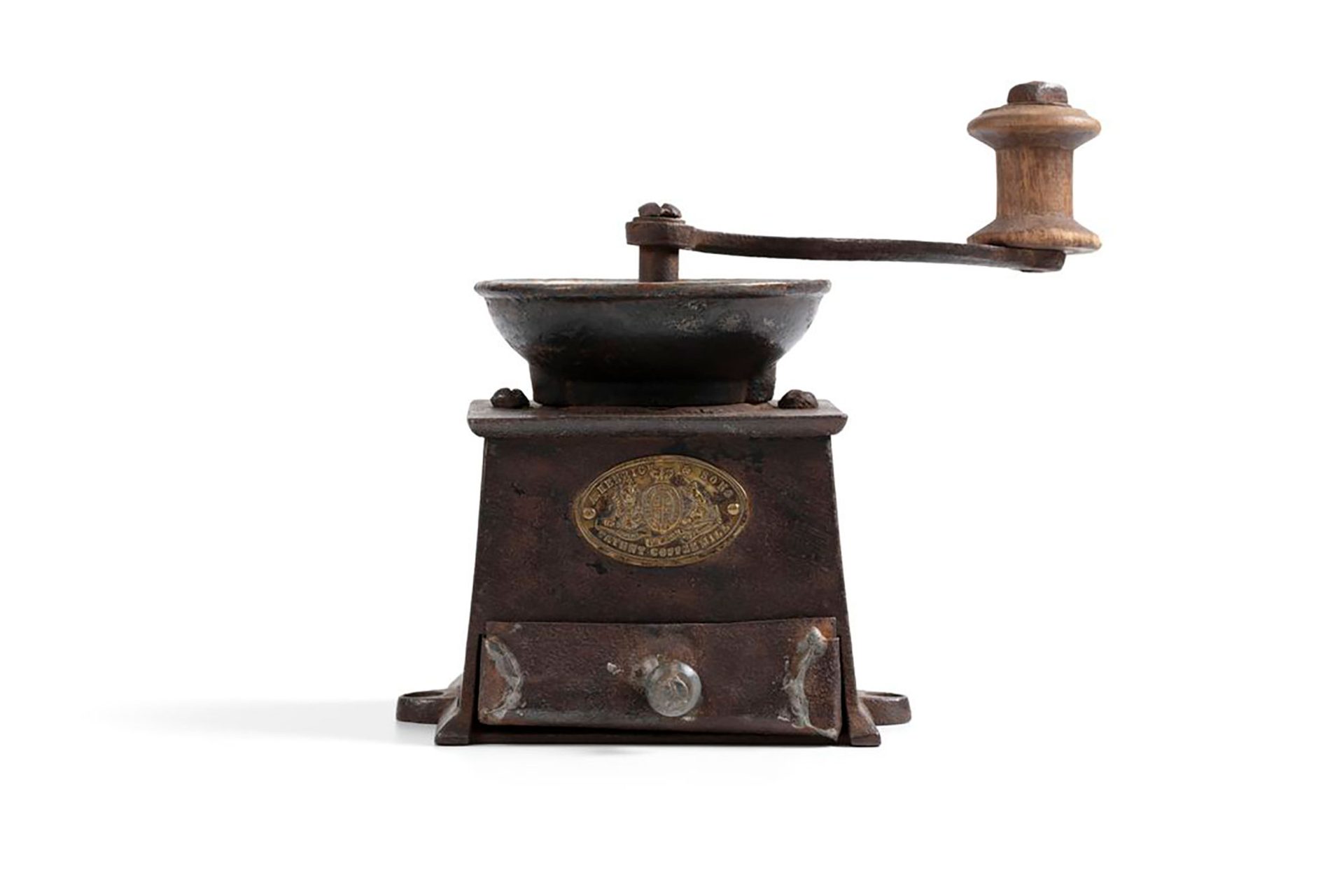
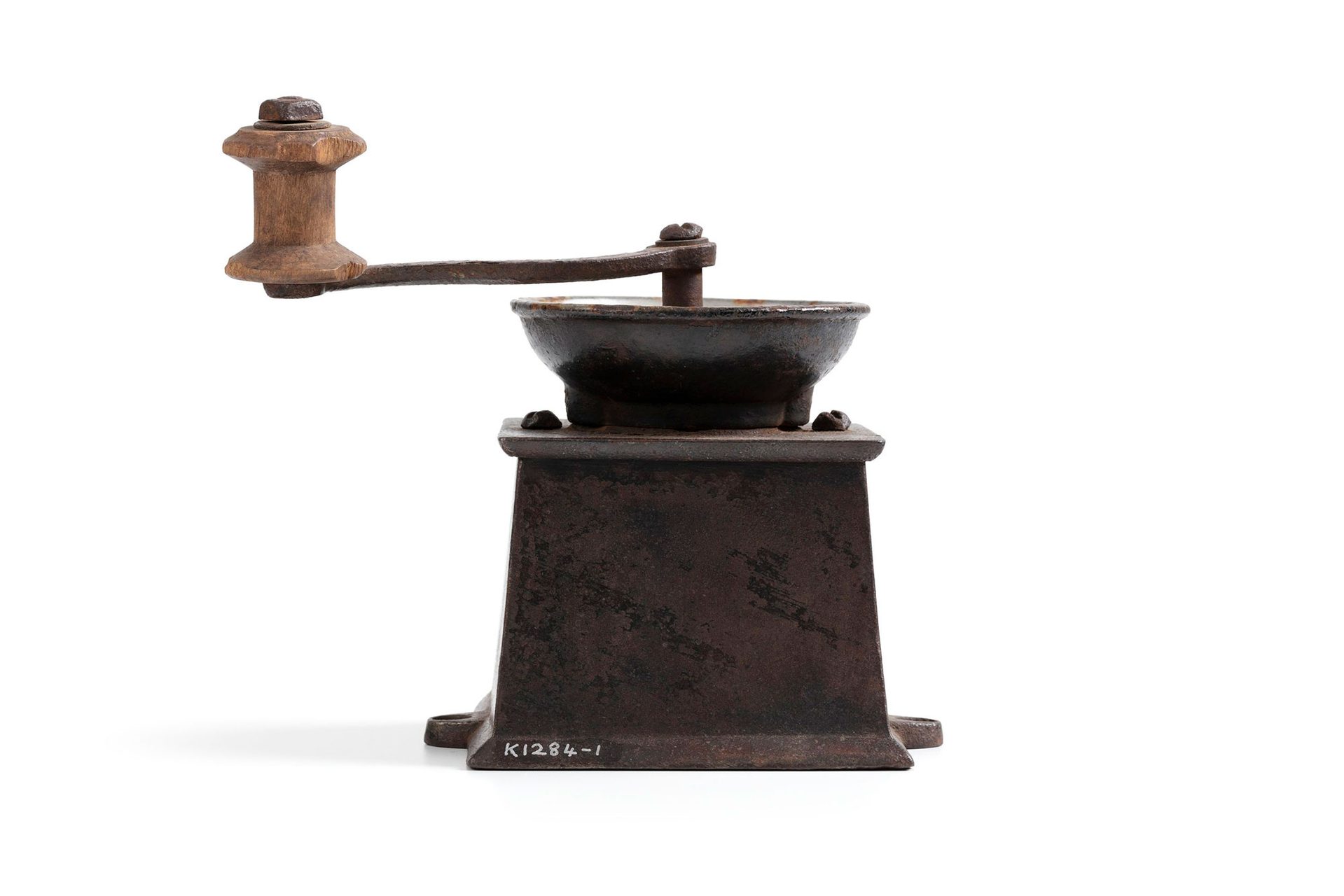
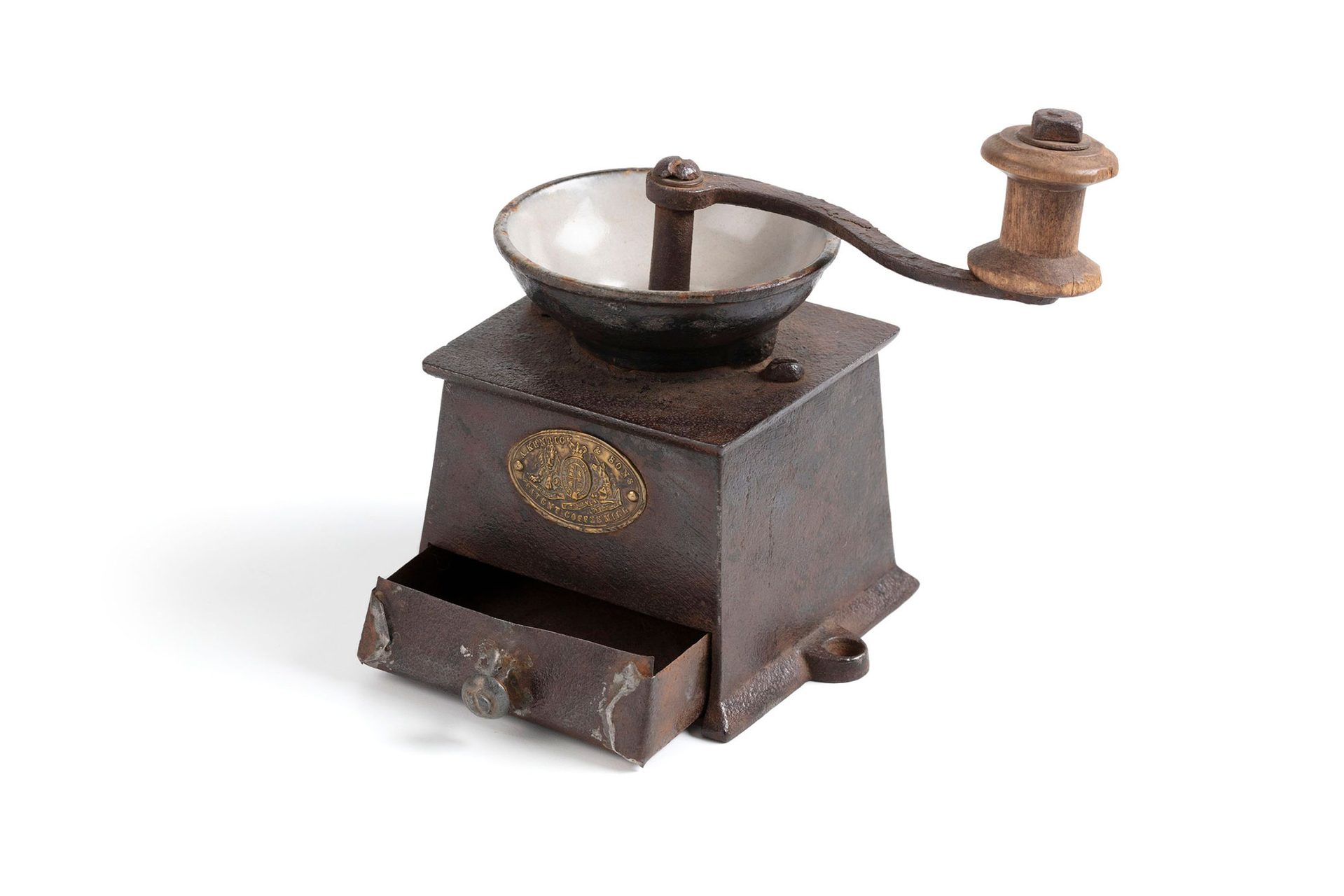

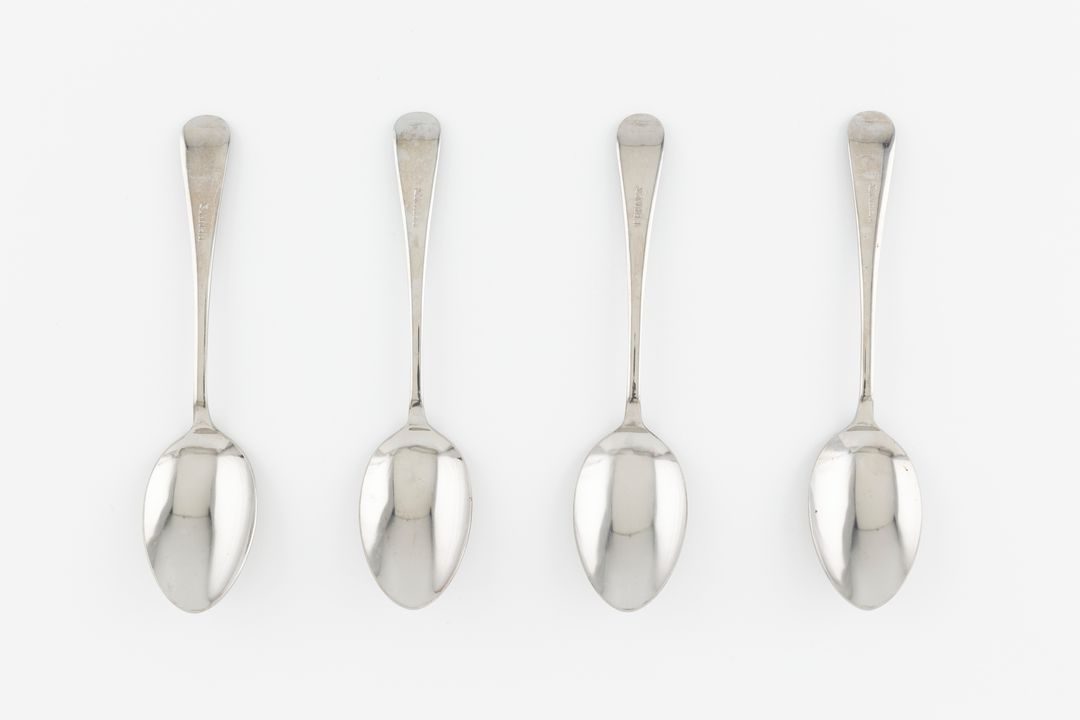
![Coffee maker, metal, [Australia], c 1880](https://cdn.sanity.io/images/wkgts1b4/production/b8931085778c239d859bbb5e3e5d83f4fb54ae5e-2000x1335.jpg?w=1920&h=1280&q=82&fit=fillmax&crop=entropy&auto=format)
